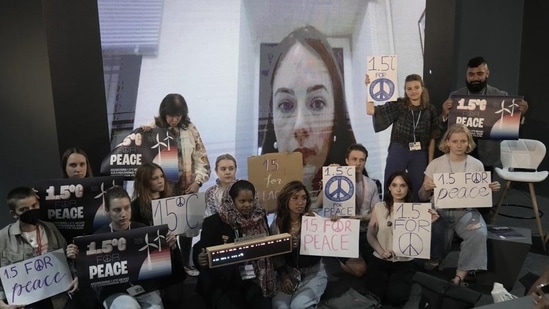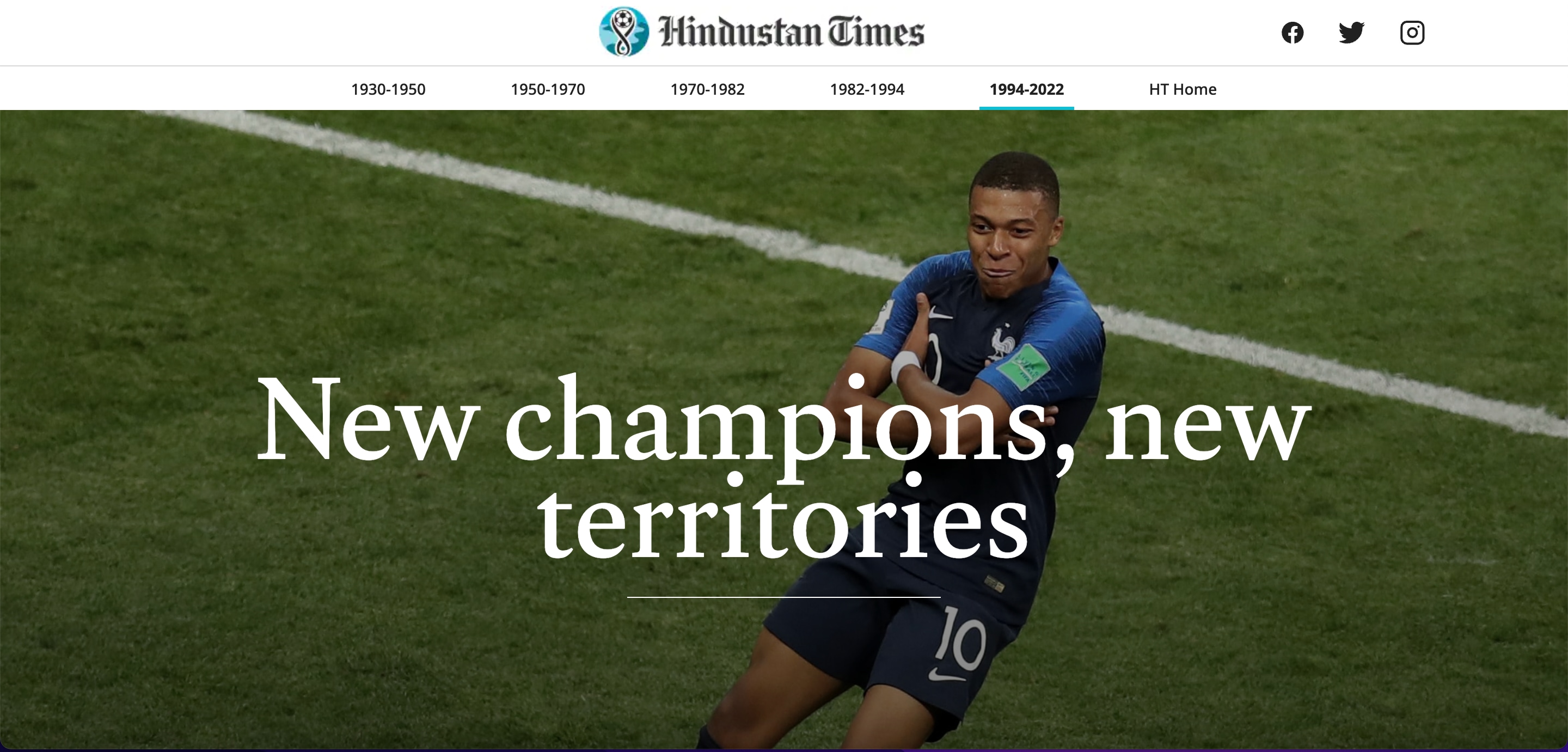| | | Good morning! | | That the world will miss the target of keeping global warming to below 1.5 degrees Celsius over pre-industrial levels is a given; the question is whether this will happen in the 2030s or 2040s. At current levels of emissions, the world is set to warm by 2.1-2.9 degrees Celsius over pre-industrial levels by the turn of the century. Still, one of the key issues at COP27 was the 1.5 degrees Celsius target. It was mentioned in the Paris Agreement, which almost anyone who has anything to do with climate change negotiations considers sacrosanct in letter (although most of the signatories have continued to blithely violate its spirit); it was retained at COP26; and so, the argument has gone, it is imperative that COP27 also accepts it. There’s merit in this school of thinking – after all, if we are not yet at 1.5 degrees, treating it as a threshold that can’t be crossed is one way to ensure countries remain serious about the climate crisis.  In truth, though, everyone knows that 1.5 will soon be crossed; after all, keeping global warming to below 1.5 degrees Celsius will require countries to make the kind of emission cuts that are both impossible and impractical. Which means criticism that not acknowledging 1.5 as a bar means there has been some backsliding doesn’t make sense – because, physically, scientifically, mathematically, 1.5 is no longer the bar. And there are far more critical issues that need to be discussed. This newsletter is being written on Friday morning; the climate conference is scheduled to end Friday evening, although it could, like COP26, stretch on, perhaps even through all of Saturday. For those seeking to understand what the outcome – when it comes – means, read on. It is, after all, the most important story right now. | | THINK  Credit: AP As HT’s Jayashree Nandi reported from Sharm El Sheikh, by Wednesday, even the principles of “equity” and “common but differentiated responsibilities” were being discussed, and developed countries were keen to use terms such as “emerging economies”, “major polluters”, and “parties with capacity” in the text of the agreement — a direct attempt to make India and China contribute a fund for Loss and Damage that was originally meant to be funded (and which should ideally only be funded) by historical polluters (read: the First World). It’s worth understanding the principles of equity and common but differentiated responsibilities. The first simply says that every country has the same right to development (that the developed countries did). And the development of the First World was entirely powered by fossil fuels. The second acknowledges that the world faces a common problem, which every country needs to address, but that their individual efforts can differ. It’s easy to see why developed countries would want to challenge this. The COP27 presidency has sought to dismiss these efforts as routine. “This is a conversation that takes place every year,” Egypt’s COP27 ambassador Wael Aboulmagd told Jayashree on Wednesday. “The Paris Agreement says it in black and white. Under Article 21, it states that the entire Paris Agreement should be guided by equity and common but differentiated responsibilities.” Coal, climate finance, and loss and damage funding are the contentious issues, with the third perhaps being the most sticky (so much so that the unofficial draft or the non-paper put out by the Egyptian presidency of the conference on Thursday actually did not have anything on it). | | THINK MORE  Credit: PTI It was a week of conferences. The G20 meeting at Bali ended earlier this week ; India officially takes over the presidency of the grouping on December 1. India, as my colleague Rezaul Laskar wrote, has asserted that “its focus during its G20 presidency will be on an inclusive and action-oriented agenda, and that it will work to bridge the digital divide and tackle the challenges of food and energy security in the aftermath of the Ukraine war”. Over the course of the year to September 2023, when the next G20 summit will happen in New Delhi, India will have to confront several issues: the Ukraine war, food security, the energy crisis, the climate crisis, and the digital divide. India’s G20 sherpa Amitabh Kant focused on some of these issues in an op-ed in Hindustan Times. “India’s participation and presentations in Bali were a resounding success. As the nation takes on the mantle of the presidency from Indonesia, we are also transitioning from a contributor to a shaper of agendas of global significance. We have positioned ourselves as a voice of influence among developed nations and an impassioned interlocutor for the developing world at important international platforms. This geopolitical vantage point and the ethos of inclusivity, harmony, embracing diversity and promoting dialogue, enshrined in Vasudhaiva Kutumbakam (the world is one family), will be the essence of our much-anticipated G20 presidency,” he wrote. | | KNOW  (Click to expand) The World Cup starts on Sunday. India may be cricket country, but football has always been popular here (and not just in Kerala, Goa, Kolkata and the North East). The World Cup in Qatar will be the 22nd edition of what is inarguably the world’s biggest sporting event. In 2018, for instance, over half of humankind watched the football World Cup. To celebrate, HT has captured the journey of the World Cup in five phases: the beginning (1930-50); the dominance of Brazil (1950-70); the European era (1970-82); the Maradona years (1982-94); and the emergence of new champions and regions (1994-2022). | | LEARN Last Saturday, at the Hindustan Times Leadership Summit, Reserve Bank of India governor Shaktikanta Das said inflation would likely come down to below 7% in October. Sure enough, when retail inflation numbers were released, they came in at 6.8%. Better still, wholesale inflation numbers touched single digits after being in double digits for the past 19 months. It is quite likely that both retail and wholesale inflation have peaked, although the stickiness of core-inflation remains cause for concern. Given the ominous direction that cereal inflation is moving, that too could pose a challenge in the months to come. My colleague Roshan Kishore has a quick primer on what’s going on. | | READ MORE Five football stars yet to win the World Cup Rethink India’s nationally protected monuments list The FTX implosion is a costly lesson for retail investors Hate speech by lawmakers is a serious problem | | OUTSIDE  Credit: HT Print Bharat Biotech’s Covaxin has shown itself to be an effective vaccine in tackling Covid-19. But there’s no way India’s drug regulator could have known this at the time of the vaccine’s approval simply because the requisite data wasn’t available at the time (one reason why the vaccine was approved with an unprecedented caveat – that it be administered in “clinical trial mode”). After Stat News carried an article titled “A very worrying scenario: Internal documents on India Covid-19 vaccine raise troubling questions about approval process” the Indian health ministry and Bharat Biotech issued their own version of events (a Bharat Biotech executive was interviewed by Stat News for the article and pretty much accepted that corners had been cut in the approval process ), but as my colleague Rhythma Kaul explained the clarifications did not address specifics mentioned in the report. | | WHAT I'M READING Nothing serious this week, but some fast-paced science fiction, Blake Crouch’s Upgrade. It’s about a man — whose job is to track and shut down “dark gene labs” where people are trying to make (illegal) changes to the human genome — who gets infected by a virus during one such raid, and soon discovers that he is becoming both stronger and smarter. As with all science-fiction of this genre, he is eventually confronted with a moral dilemma: should the virus be destroyed, or should he allow it to spread, causing humanity to upgrade (although some of them will end up dead from the transition). | | WHAT I’M LISTENING TO Ice Pickin’, widely considered the best album of Albert Collins, who bestowed his playing with unique strength by plucking the string with his thumb and forefinger (instead of using a pick). Collins was a guitarist’s guitarist, played a Fender Telecaster tuned to an unusual F minor (he used a capo), and together with his picking, this gave his blues a distinctive tone — so distinctive, in fact, that it is hard to mistake his playing for anybody else’s. Collins’s singing is journeyman-like, but there’s enough in Ice Pickin’ — Cold, Cold Feeling; Ice Pick — to show why his admirers included Jimi Hendrix. | Please share your feedback with us What do you think about this newsletter? | | Were you forwarded this email? Did you stumble upon it online? Sign up here. | | | | | | Get the Hindustan Times app and read premium stories | | | | | | View in Browser | Privacy Policy | Contact us You received this email because you signed up for HT Newsletters or because it is included in your subscription. Copyright © HT Digital Streams. All Rights Reserved | | | | |